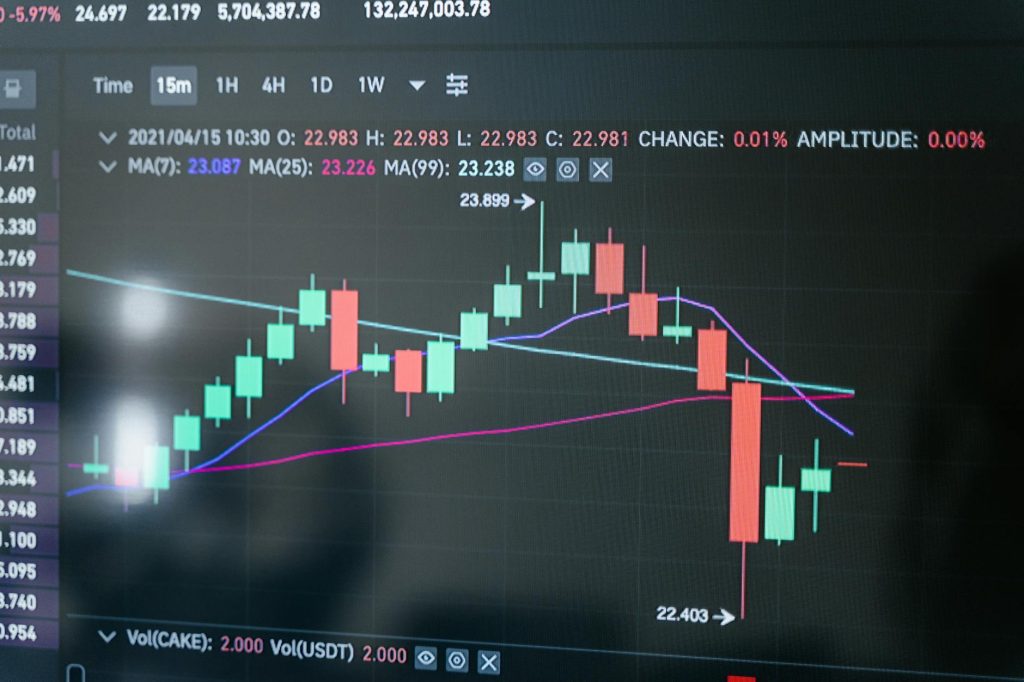Stablecoins: The digital world’s attempt to build a financial on-ramp for everyone. Pegged to assets like the US dollar, they promise stability in a sea of volatility. But is this promise a solid foundation or a fragile house of cards, waiting for a gust of market wind?
The Allure of the Peg: What Makes Stablecoins Tick?
At their core, stablecoins aim to maintain a 1:1 value with a reserve asset. The most common are dollar-pegged, attempting to mimic the dollar’s purchasing power. This seemingly simple concept unlocks a world of possibilities in the crypto space. Traders use them to sidestep the volatility of Bitcoin and Ethereum, DeFi platforms employ them to facilitate lending and borrowing, and international users access financial services in places where their local currency is unstable. But how do they actually work?
There are several mechanisms for maintaining the peg. The most common is asset-backed, where the stablecoin issuer holds reserves of the pegged asset. This could be US dollars, Treasury bills, or other liquid assets. Then, there are algorithmic stablecoins, which rely on algorithms and smart contracts to manage supply and demand, hoping to maintain the peg. Finally, there are crypto-backed stablecoins, which use other cryptocurrencies as collateral. Each method has its own set of benefits and, let’s be honest, its own potential for total meltdown.
The concept is simple enough: if you want to get into crypto but don’t want to risk a 20% daily swing, you can buy a stablecoin. Need to borrow crypto? Stablecoin again. It’s a financial Swiss Army knife, a cornerstone for building out the next generation of financial tools.
Asset-Backed: The Trust Game and Reserve Concerns
Asset-backed stablecoins, like Tether (USDT) and USDC, are the big dogs in the stablecoin yard. They claim to hold reserves of the underlying assets that back their coins. But here’s the catch: trust is everything. If the reserves aren’t there, or if they’re in questionable investments, the peg breaks, and the whole ecosystem can unravel faster than a cheap sweater at a Slayer concert. It’s a game of trust, and a lot of us are playing it with money we can’t afford to lose.
Audit reports are the key to the kingdom here. These are supposed to offer transparency, but they aren’t always the end-all, be-all. Sometimes, these audits have holes you could drive a tank through. Investors have to scrutinize these reports and question the quality of the assets. Are they holding actual dollars? Are they holding short-term debt? Or are they buying up commercial paper and calling it reserves? That’s where the digging needs to happen. A 2023 speech by Lael Brainard, then Vice Chair of the Federal Reserve, outlined the risks of stablecoins, highlighting the need for regulatory clarity and robust oversight to protect against potential financial instability.
Let’s not forget about diversification. Diversification is your friend. A diverse portfolio with a range of assets can help protect you. That includes things like gold, real estate, or other hard assets. Don’t put all your eggs in one basket… or one stablecoin, for that matter.
Algorithmic Stablecoins: Hope, Hype, and the Risk of Collapse
Algorithmic stablecoins represent the wild west of this whole thing. Instead of relying on reserves, these coins use algorithms and smart contracts to maintain their peg. They often employ mechanisms like seigniorage shares and arbitrage opportunities to balance supply and demand. The idea is that the system automatically adjusts to keep the price stable. It’s complex, it’s ambitious, and, as we’ve seen, it can blow up spectacularly.
The most famous example is Terra (UST), which imploded in spectacular fashion, wiping out billions of dollars and sending shockwaves through the crypto markets. The Terra/Luna collapse was a brutal lesson on the perils of complex financial engineering without adequate safeguards. It showed how quickly trust can erode and how devastating the consequences can be when algorithmic models fail to account for unforeseen events, especially a rapid sell-off. The US Treasury Department’s report on stablecoins, published in November 2021, highlighted the need for federal oversight to mitigate systemic risks associated with stablecoins and prevent events like the Terra collapse.
These projects are trying to solve a complex problem. The underlying issue with algorithmic stablecoins is that, at times, they don’t account for the psychological element of the market. No algorithm, no matter how brilliant, can fully predict human behavior when fear and panic take over.
Crypto-Backed Stablecoins: Navigating the Volatility of Volatility
Then there are crypto-backed stablecoins, which, as the name implies, use other cryptocurrencies as collateral. These are usually overcollateralized, meaning they hold more collateral than the value of the stablecoins issued. This extra buffer is meant to protect against the volatility of the collateral assets. However, the overcollateralization can create inefficiencies, and if the underlying crypto assets crash, the stablecoin can be at risk. The collateral could be something that loses value, like a meme coin, or simply a highly volatile altcoin, which means you’re trying to build stability on a shaky foundation.
The biggest player in this game is MakerDAO and its DAI stablecoin. DAI is built on the Ethereum blockchain and backed by a variety of crypto assets. It’s a complex system, but the basic idea is that users deposit collateral (like ETH) and borrow DAI against it. The system uses liquidations to protect against price drops, but even MakerDAO has faced its share of challenges, proving that even well-designed systems are not immune to market volatility. It’s like building a fortress out of Jenga blocks, where one wrong move can topple the whole thing.
Regulation and the Future of Stablecoins
The regulatory landscape is where things get interesting. Governments worldwide are scrambling to figure out how to regulate these digital assets. Some are calling for strict oversight, others for a more hands-off approach. The debate is ongoing and will likely shape the future of stablecoins. The pressure is on to define the rules of the game, so we can understand if these digital coins are an important part of the future or simply a temporary fad.
The main goals of regulators are to protect consumers, prevent money laundering, and maintain financial stability. They are wrestling with the same core questions: Do stablecoins need to be treated like banks? Should they be required to hold the same reserves? Should there be limits on the types of assets that can be used as collateral? The answers to these questions will determine whether the stablecoin industry can thrive and, if so, in what form. What’s certain is that the game is changing.
It’s all a very metal situation. We’re all just trying to drink our coffee and navigate this crazy world. I, for one, will always be drinking mine, and you can grab a nice
As you know, the world of crypto is vast and requires a hefty cup of motivation. It is possible that the world is a simulation, and if so, at least you can drink from your cool mugs as we try and decipher its mysteries.


